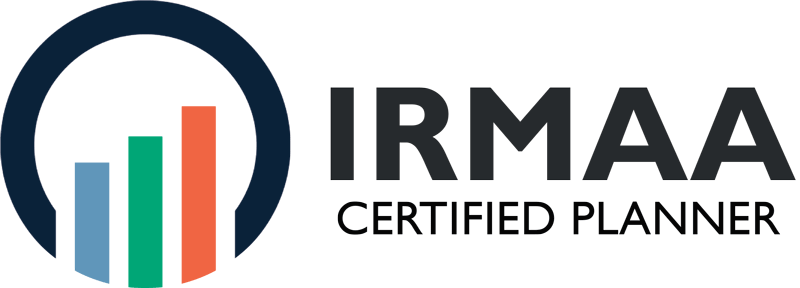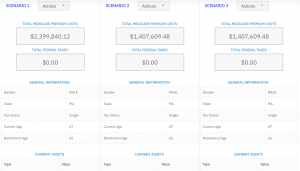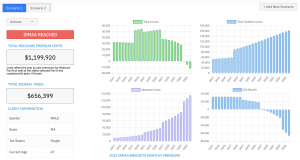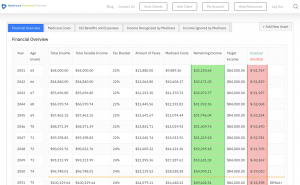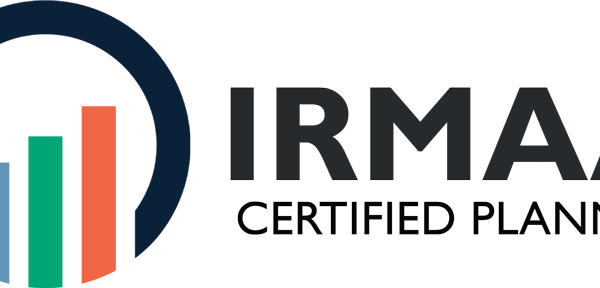Last year, we saw a significant shift that rattled the foundations of Social Security contributions. This year is no different; 2024 brings another wave as the oasdi limit 2024 climbs higher than ever before.
You’ve heard whispers at work about it or seen headlines flash across your screen. It’s time to get a clear picture because this change isn’t just news—it directly impacts how much you’ll pay into Social Security and what your future benefits might look like.
I’m peeling back the layers on these new rules so you can see exactly how they play out in real dollars and cents for both employees and employers alike. Stick around—knowing this could make all the difference when planning for retirement or crunching payroll numbers.
Understanding the OASDI Limit in 2024
The OASDI limit, which affects your paycheck by deducting a portion of it for Social Security taxes, is an impactful part of the Old-Age, Survivors and Disability Insurance program. For those scratching their heads, let me break it down: The Old-Age, Survivors, and Disability Insurance program caps how much of your income can be taxed for Social Security each year. And guess what? In 2024 this cap is jumping up to $168,600.
What is the OASDI Limit?
The OASDI limit, or social security wage base, acts like a ceiling on earnings subject to that familiar social security tax we all love to hate. It’s like saying “You only have to pay up until here; after that enjoy your hard-earned money.” This isn’t just an arbitrary number though—it’s pegged to average wages which means when we’re all making more dough on average, Uncle Sam adjusts his slice of our pie accordingly.
This leads us into why this matters: if you earn under $168,600 in 2024 (which most people do), every dollar earns its own little shadow called FICA—yep that pesky payroll tax—but if you soar above that amount? Well then congratulations high-flyer. Your additional income gets off scot-free from these particular taxes.
Calculating Your Contributions
You might now wonder how they decide who pays what. So let’s get down with some math fun—you contribute a steady rate of 6.2% towards social security taxes from each paycheck until your earnings hit that sweet spot—the wage base limit ($168,600). Once there however it stops even if salary keeps climbing because there’s no need for wings where eagles dare not perch—or something poetic like that.
Your employer matches this dance step-for-step contributing another 6.2%, so together both are grooving at a combined total rate hovering around 12.4%. But before self-employed folks start feeling left out don’t worry—we haven’t forgotten about you. You guys get double dipped since technically being both employee and employer which brings us to paying full combo meal deal at said tasty tune of 12.4% solo style—all without any fries on side unfortunately.
How the OASDI Limit Affects Social Security Contributions
Buckle up buttercups because changes in these limits affect everyone involved—from workers diligently watching deductions disappear from their paychecks right through companies doing the actual deducting themselves. Employers must keep tabs to make sure correct withholding happens based on updated figures, or else they might face the wrath of IRS spirits come audit time—and nobody wants that kind of unexpected surprise.
Key Takeaway:
Keep an eye on the OASDI limit—it’s your earnings ceiling for Social Security taxes. In 2024, that number is $168,600. Earn less and you’re taxed on every dollar; earn more and the excess is yours to keep.
Get ready to contribute 6.2% of each paycheck towards Social Security until you hit that cap—then no more payroll tax. And if you’re self-employed? You’ll pay a full 12.4%, but just up to the same limit.
Heads up employers: stay sharp with withholdings based on these new numbers or brace yourself for IRS trouble.
How the OASDI Limit Affects Social Security Contributions
Employer Withholding Requirements
The tug-of-war between your paycheck and Social Security taxes is real, folks. Every year, employers have to siphon off a slice of your hard-earned dough for Uncle Sam’s coffers. This isn’t just pocket change either; we’re talking about a 6.2% tax rate that bosses need to withhold from employee wages until you hit the social security wage base limit.
In 2024, this magical number—that caps how much of your income gets taxed—is jumping up to $168,600. Why should you care? Because if you’re lucky enough to be earning more than last year’s wage base limit, prepare for a little extra pinch on those paychecks.
Surely it doesn’t end there. For every dollar you earn above this threshold—poof—it’s safe from the grasp of social security payroll taxes. That means both employees strutting into work with their briefcases and employers calculating deductions can breathe easy knowing exactly what they owe without breaking out in hives over complex math equations.
Self-Employed Tax Obligations
Cue the violins for our self-employed pals who get double-whammied by these rules. Not only do they miss out on an employer splitting the bill with them—but come tax time—they’re staring down the barrel of a hefty 12.4%. They shoulder both halves: playing both employee and employer when squaring away their FICA tax contributions.
Buckle up buttercups because hitting that oasdi limit as someone flying solo in business land is no walk in the park—you’ll feel each step towards $168,600 keenly.
This cap not only influences how much freelancers set aside monthly but also plays gatekeeper determining eligibility thresholds for future benefits like retirement bliss or disability insurance—a kind reminder why staying savvy with numbers isn’t just nerdy—it’s necessary.
Now let me throw some digits at ya: everyone paying into Social Security helps prop up current retirees receiving social security while stacking chips towards their own golden years shindig—the circle of life financial style.
It all comes back around eventually—even if it seems like forever away right now.
Keep tabs on where things stand annually; remember adjustments aren’t arbitrary whimsy but tethered closely to cost-of-living fluctuations which make sure beneficiaries don’t lose purchasing power due inflation sneaking around stealing value quietly night after night.
There’s always plenty buzz about “payroll taxes” yet few take moment truly digest gravity situation here—we’re bankrolling today seniors. We must be aware of the effects our money has and how it assists in sustaining elderly folks close to us. By contributing to this system, we’re not just fulfilling a legal duty; we’re upholding a social contract that spans generations.
Key Takeaway:
Watch your paycheck shrink as employers withhold a 6.2% Social Security tax, but only until you earn $168,600 in 2024. Make more than that? The rest is yours, tax-free. Self-employed folks pay double but remember: it’s not just taxes; it’s funding retirements and supporting elders—our social contract in action.
Changes to the OASDI Limit in 2024
The chatter among those who crunch numbers for a living is all about the significant bump up in the Social Security wage base for 2024. Picture this: You’ve been at your job, watching that slice of your paycheck go towards Social Security taxes every payday. Now, imagine it just got a bit bigger because Uncle Sam decided it’s time to adjust how much dough gets taxed.
Historical Wage Base Trends
If you’ve kept an eye on these trends over time, you’ll know they’re like that unpredictable friend – sometimes they barely move; other times, they jump higher than your cat when spooked. Over the last five years, we saw average annual increases hovering around $3,960—a gentle uphill walk. But hold onto your hats. For 2024? It’s more like leaping over an $8,400 hurdle.
This isn’t some random number pulled from thin air; it reflects changes in our economy and wages across the nation—the whole shebang influenced by inflation and cost-of-living adjustments (COLAs). With each new year comes a COLA increase, keeping benefits snugly aligned with living costs.
So why should Joe and Jane Taxpayer care? Well folks—because this affects everyone earning above last year’s limit. If you’re one of those high-fliers or if you’re hiring them—you’ll be parting ways with more cash towards Social Security contributions thanks to this change.
OASDI Limit Spike: Breaking Down The Numbers
You might wonder what exactly happens when there’s such a hike in limits—it means both employees and employers will see changes affecting their pockets directly:
- For Employees: More money out of paychecks now could mean beefier benefits later down retirement road—it’s kind of like planting seeds today for tomorrow’s harvest.
- To Employers: It may seem rough having to contribute extra but remember—that contribution secures financial aid wheels turning smoothly into employee golden years.
- The Self-Employed Crowd: Pulling double duty paying both halves can feel like lifting weights without gloves—harder on hands but makes stronger biceps…or bank accounts?
And let me drop another stat bombshell here: We’re talking about maximum earnings subject to tax shooting up from its previous mark straight into $168600 territory.
employees’ 6.2% for Social Security, but remember, it’s not as daunting as it sounds. You’re covering both the employee and employer portions, which is why it’s higher. So take a deep breath—planning ahead makes this manageable.
Key Takeaway:
Get ready to adjust your budget; the OASDI limit is jumping up in 2024. This means more of your paycheck will go toward Social Security now, but it could lead to bigger benefits when you retire. For employers and self-employed folks, this uptick is tough on the wallet today but invests in future financial security.
Implications of the OASDI Limit for Social Security Benefits
Social security is not merely a card in one’s wallet, but rather an essential support system for countless individuals. But as times evolve, the regulations that govern this support system are also changing. For retirees receiving social security and those planning their retirement, understanding how the Old-Age, Survivors, and Disability Insurance (OASDI) limit shifts is key to making sense of future paychecks.
The Impact on Monthly Benefits
First off, imagine getting an extra pineapple on your pizza each month – that’s what 2024 has in store with benefits expected to grow by over $50 thanks to a cost-of-living adjustment (COLA). This 3.2% boost means more dough for groceries or whatever tickles your fancy.
We’re not just talking chump change here; these monthly benefits increases are crucial updates ensuring Social Security keeps pace with inflation. Think about it: every year things get pricier but our wallets don’t always follow suit—this increase helps bridge that gap.
A Closer Look at COLAs and Increased Wage Bases
The reason behind these benefit bumps? The wage base—the maximum earnings subject to social security tax—has risen from last year’s cap significantly due to adjustments reflecting national average wage increases. To give you perspective: if we hop into our time machine and look back five years ago, we’d see annual hikes averaging around $3960—but fast forward back to now… whoa Nelly. It’s jumped up $8400.
This leapfrogging pattern might seem like jumping jack flash numbers flying all over the place but remember—it makes sure everyone pays their fair share into the system based on what they earn while protecting beneficiaries against losing purchasing power as life gets more expensive.
Tax Implications for Workers Paying Into Social Security
If you’re still clocking in day-to-day or running your own gig—as many self-employed individuals do—you’ll feel this update directly where it counts: right in those paycheck calculations or quarterly estimated payments. Check out this resource for detailed info if math isn’t exactly your cup of tea (or coffee).
- Your slice of pie goes up too—not just employers’ contributions—which keeps everything balanced scale-wise between workers footing bills today versus seniors counting coins tomorrow.
- Bear in mind though there’s a ceiling amount cashola can be taxed under FICA—that’s what we’re talking about when we say “wage base”.
- Circling the wagon train a bit, let me tell ya—if you have a moonlight
- Let’s circle back to that point. If your project’s like moonlighting—extra work on top of your day job—it needs extra attention.
Key Takeaway:
Social Security’s OASDI limit change means bigger checks and fairer taxes. Benefits are up like adding extra toppings to your pizza, while the wage base hike ensures everyone chips in equally.
Conclusion
So, you’ve seen the numbers. The oasdi limit 2024 has jumped up, making a splash in your Social Security game plan. Here’s what to take home: Higher wage base means more cash stashed for retirement days.
Remember this—every paycheck has its slice for Social Security. But now that slice stops at $168,600. It’s key info whether you’re on the giving or getting end of those pay stubs.
Catch this too—employers and self-employed folks are digging deeper into their pockets with each new increase. Let that sink in when budgeting business expenses or mapping out personal finances.
Last thing: benefits get a boost as well from these changes; retirees can expect bigger checks coming their way because of it all.
In essence, stay savvy about these shifts—it’s how you’ll keep ahead financially as we march forward through 2024 and beyond.
Streamlining the Medicare Surcharge Calculation Process.
Our Healthcare Retirement Planner software is designed to streamline the retirement planning process for financial professionals. By providing an efficient way to calculate IRMAA costs, our tool helps you save time and focus on other aspects of your clients’ retirement plans.
- Faster calculations: Our software quickly calculates IRMAA costs based on your client’s income and tax filing status, eliminating manual calculations and potential errors.
- User-friendly interface: The intuitive design of our platform makes it easy for financial professionals to input data and generate results with minimal effort.
- Data integration: Seamlessly integrate our calculator into your existing financial planning tools or CRM systems for a more streamlined workflow.
- Easy to Understand Reports: Export reports to easily share with your clients
- Tax and Surcharge Modeling: see how different types of income affects both taxes and your surcharges.
In addition to simplifying the calculation process, using our Healthcare Retirement Planner can also help improve communication between you and your clients. With clear visuals that illustrate how IRMAA costs impact their overall retirement plan, you can effectively convey complex information in an easily digestible format. This enables clients to make informed decisions about their healthcare expenses during retirement while ensuring they are prepared for any potential changes in Medicare premiums due to income fluctuations. To learn more about how our software can benefit both you as a financial professional and your clients’ retirement planning experience, visit the features page. Streamlining retirement planning processes can help financial professionals save time and resources, allowing them to focus on other areas of their clients’ needs. Automated calculation of IRMAA costs is the next step in streamlining this process even further.
I am text block. Click edit button to change this text. Lorem ipsum dolor sit amet, consectetur adipiscing elit. Ut elit tellus, luctus nec ullamcorper mattis, pulvinar dapibus leo.
I am text block. Click edit button to change this text. Lorem ipsum dolor sit amet, consectetur adipiscing elit. Ut elit tellus, luctus nec ullamcorper mattis, pulvinar dapibus leo.
Streamlining the Medicare Surcharge Calculation Process.
Our Healthcare Retirement Planner software is designed to streamline the retirement planning process for financial professionals. By providing an efficient way to calculate IRMAA costs, our tool helps you save time and focus on other aspects of your clients’ retirement plans.
- Faster calculations: Our software quickly calculates IRMAA costs based on your client’s income and tax filing status, eliminating manual calculations and potential errors.
- User-friendly interface: The intuitive design of our platform makes it easy for financial professionals to input data and generate results with minimal effort.
- Data integration: Seamlessly integrate our calculator into your existing financial planning tools or CRM systems for a more streamlined workflow.
- Easy to Understand Reports: Export reports to easily share with your clients
- Tax and Surcharge Modeling: see how different types of income affects both taxes and your surcharges.
In addition to simplifying the calculation process, using our Healthcare Retirement Planner can also help improve communication between you and your clients. With clear visuals that illustrate how IRMAA costs impact their overall retirement plan, you can effectively convey complex information in an easily digestible format. This enables clients to make informed decisions about their healthcare expenses during retirement while ensuring they are prepared for any potential changes in Medicare premiums due to income fluctuations. To learn more about how our software can benefit both you as a financial professional and your clients’ retirement planning experience, visit the features page. Streamlining retirement planning processes can help financial professionals save time and resources, allowing them to focus on other areas of their clients’ needs. Automated calculation of IRMAA costs is the next step in streamlining this process even further.
